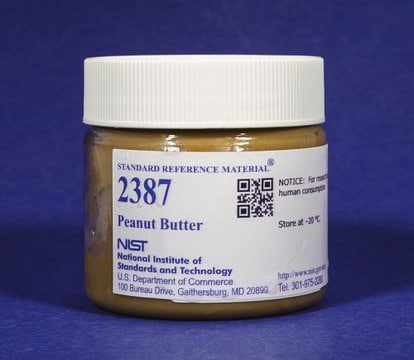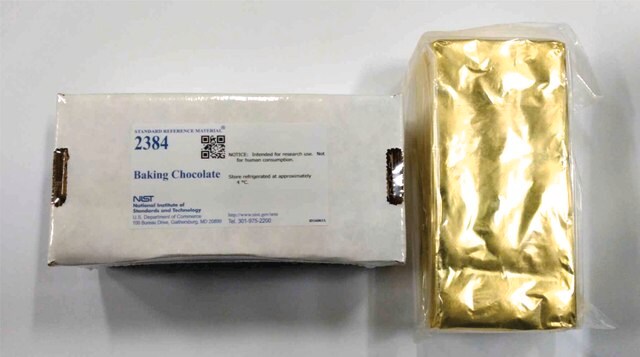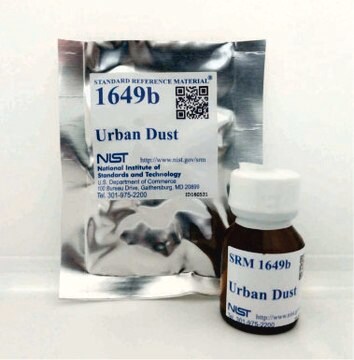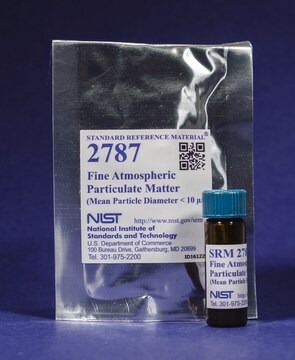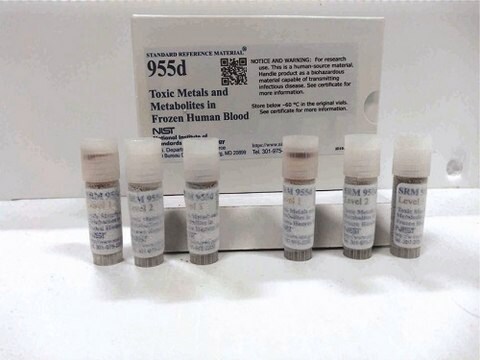推荐产品
等級
certified reference material
品質等級
形狀
liquid
包裝
pkg of 5 x 5 mL
製造商/商標名
NIST®
技術
GC/MS: suitable
optical emission spectroscopy (OES): suitable
應用
clinical research
形式
matrix material
一般說明
A unit of the Organic contaminants in non-fortified human milk standard reference material (SRM) 1953 consists of five bottles of approximately 5 mL of frozen non-fortified human milk.
SRM 1953_cert
SRM 1953 _SDS
SRM 1953_cert
SRM 1953 _SDS
應用
The SRM 1953 is intended primarily for the evaluation of analytical methods used to determine selected polychlorinated biphenyl (PCB) congeners, chlorinated pesticides, polybrominated diphenyl ether (PBDE) congeners, and elements in human milk and similar matrices.
特點和優勢
- NIST certified concentration values for PCB congeners, chlorinated pesticides, and PBDE congeners along with a polybrominated biphenyl congener are reported and expressed as mass fractions.
- Reference concentration values for additional PCB congeners, chlorinated pesticides, PBDE congeners, elements, PCDD, and PCDF congeners are provided and expressed as mass fractions.
- Information concentration value for Aroclor 1260 is expressed as mass fraction (ng/kg)
其他說明
- SRM 1953 is intended for research use.
- The milk is frozen and should be stored in a freezer at –20 °C until use.
- Expiration details and storage and use instructions are provided on the NIST certificate
- Notes on biomaterial handling, disposal, and transport are documented in the MSDS
法律資訊
NIST is a registered trademark of National Institute of Standards and Technology
SRM is a registered trademark of National Institute of Standards and Technology
儲存類別代碼
12 - Non Combustible Liquids
水污染物質分類(WGK)
WGK 3
Connie A Remoroza et al.
Analytical chemistry, 90(15), 8977-8988 (2018-07-04)
We report the development and availability of a mass spectral reference library for oligosaccharides in human milk. This represents a new variety of spectral library that includes consensus spectra of compounds annotated through various data analysis methods, a concept that
我们的科学家团队拥有各种研究领域经验,包括生命科学、材料科学、化学合成、色谱、分析及许多其他领域.
联系技术服务部门